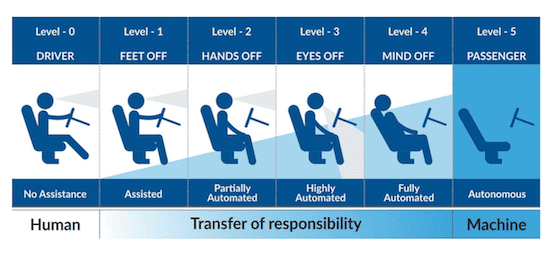


09/01/2019
The Gold Rush toward domination of the future self-driving vehicle market continues with enthusiasm. The reticence that occurred after a deadly Arizona accident in 2018 appears to have faded, at least according to a recent CBS story. In fact, the article begins by saying, “The race to create the self-driving car continues at a feverish pace…”
The billions of dollars invested in the project probably have a lot to do with that renewed energy. Nobody in Detroit or Silicon Valley (or Japan or Germany or Red China) wants to lose out on a major industry of the future.
So self-driving cars are still coming, which threatens eventual job loss for millions of Americans.

Driving is a popular employment category for immigrants, so the automation of cars and trucks means we won’t need to import them for transportation jobs.
Furthermore, the CBS report was more interested in safety — which is important. Self-driving has been sold as being perfectly safe, unlike fallible humans who drink, blink and fall asleep. But the expert appearing on CBS This Morning, Kevin Delaney, said the current technology is only at Level Two out of five levels of autonomy.

Another point of interest is Delany’s mention of worsening “congestion” — which sounds a lot like population growth, now largely fueled by immigration of varying legalities.
“We’re heading towards hell”: Expert shares concerns with self-driving cars, CBS News, August 31, 2019
The race to create the self-driving car continues at a feverish pace, with major players pumping billions into the effort. But Kevin Delaney, editor-in-chief and co-CEO of Quartz, said that when it comes to autonomous vehicles, “we’re heading towards hell.”
“These cars are not safe yet,” Delaney said. “There are five levels of autonomous vehicle safety, according to the U.S. government’s certification, and right now, at best, we’re at level two. What this means is that people need to be keeping their hands on the wheel, they need to be keeping alert to avoid accidents.”
That’s not the only potential problem. “What researchers have found is that when people have access to cars driving that require less effort and money, they actually drive a lot more,” Delaney said. “So the traffic that we experience today is likely to get a lot worse.”
To avoid those problems and establish a “good path” for autonomous vehicles, Delaney said, there are a few solutions. One is to introduce autonomous vehicles in waves, starting with lower-risk innovations like low-speed buses. Platooning — having a human drive one truck, with an autonomous truck following close behind — is another option.
The other key is to encourage carpooling. “If you make it easier for people to drive, because they could sleep, or do whatever, while [their] car is driving, we need to make sure that it’s more like Uber Pool than Uber X,” he said. “Otherwise, the congestion is going to be atrocious.” (Continues)